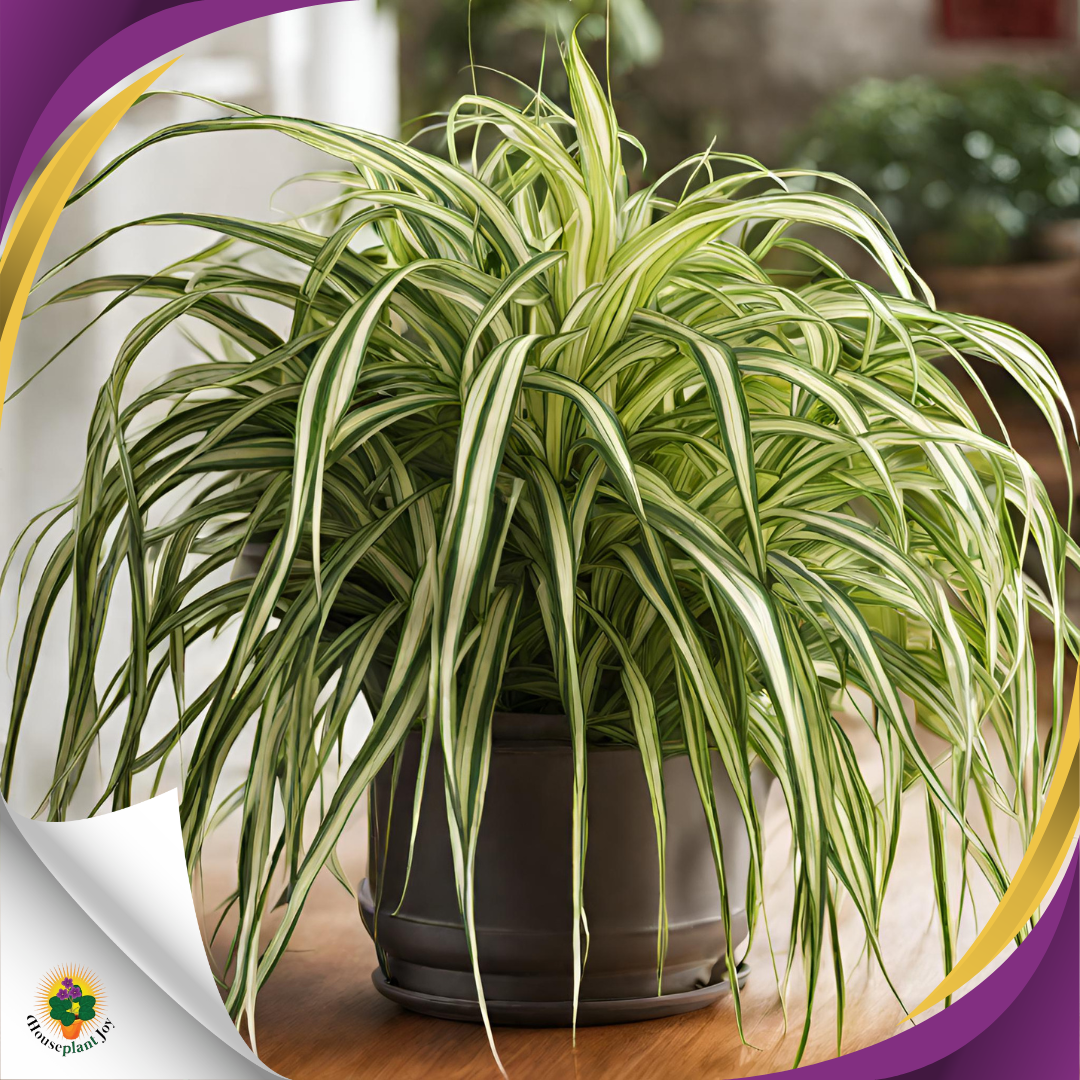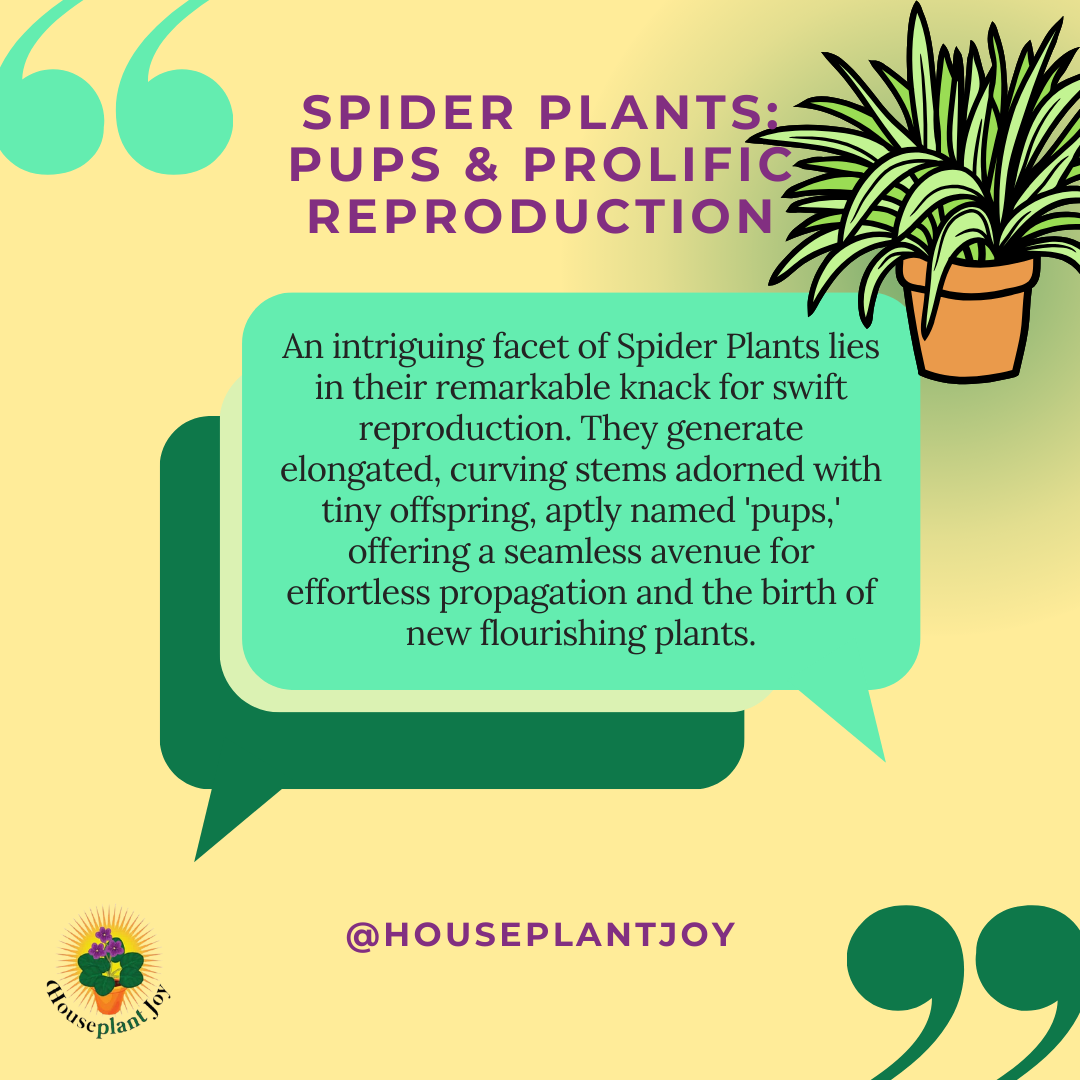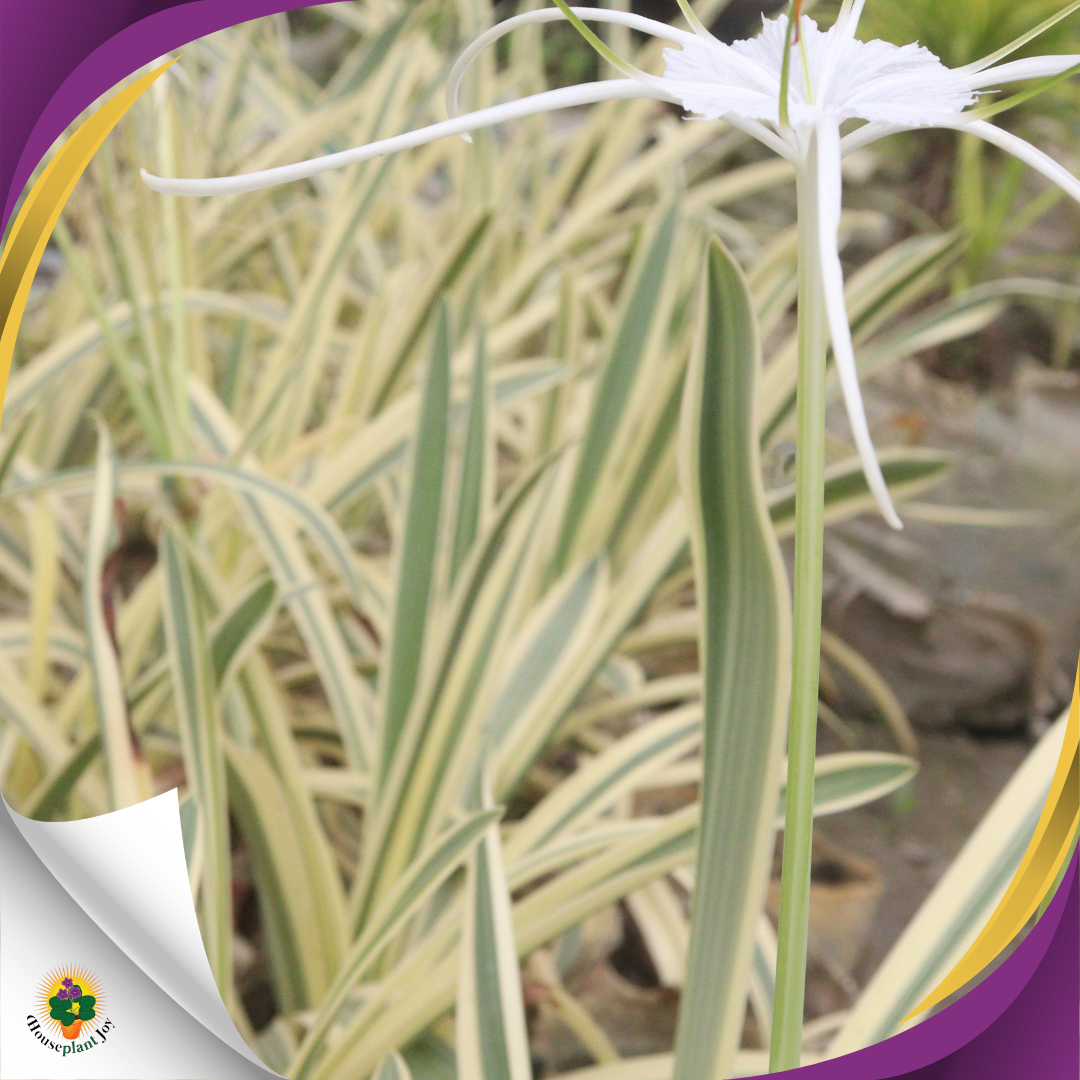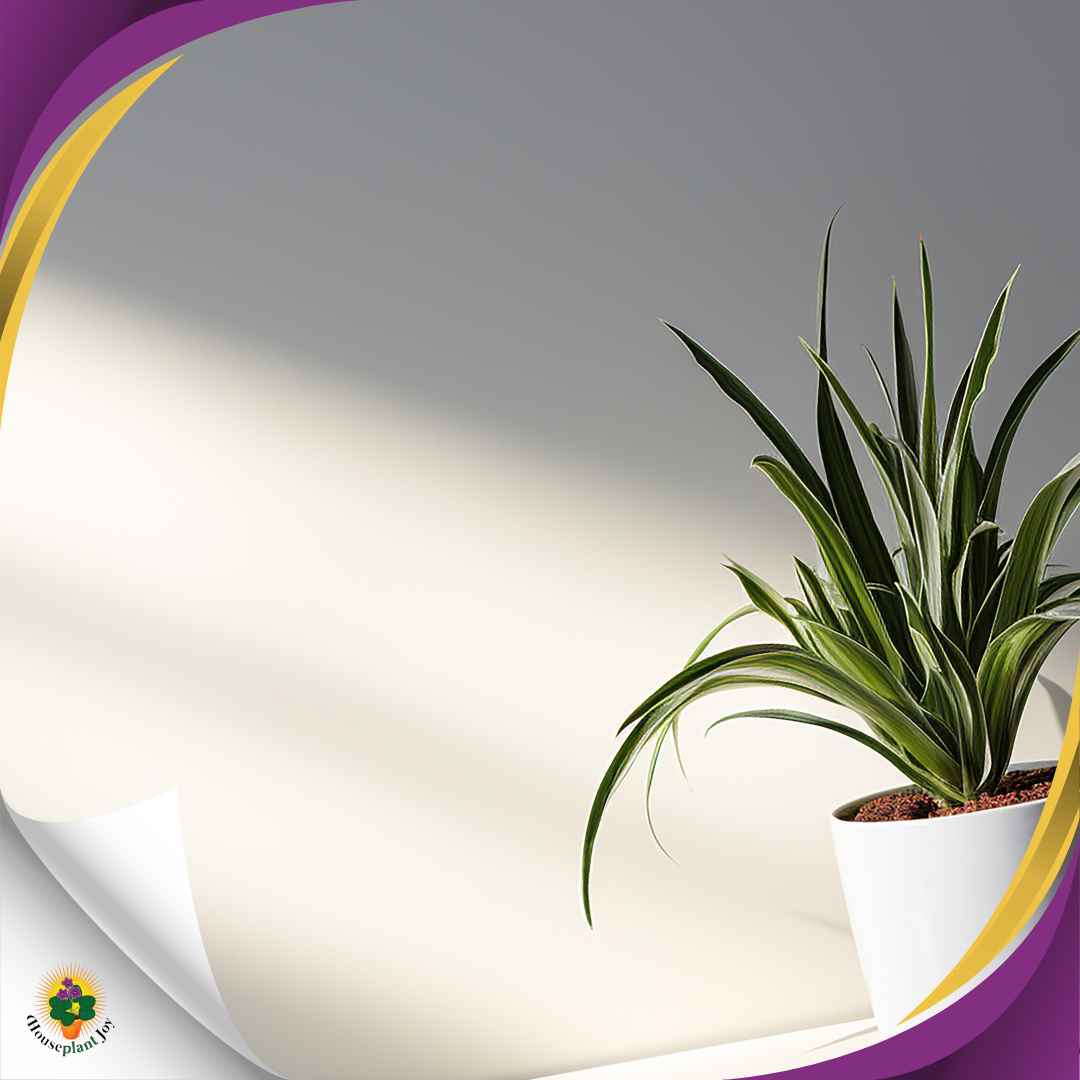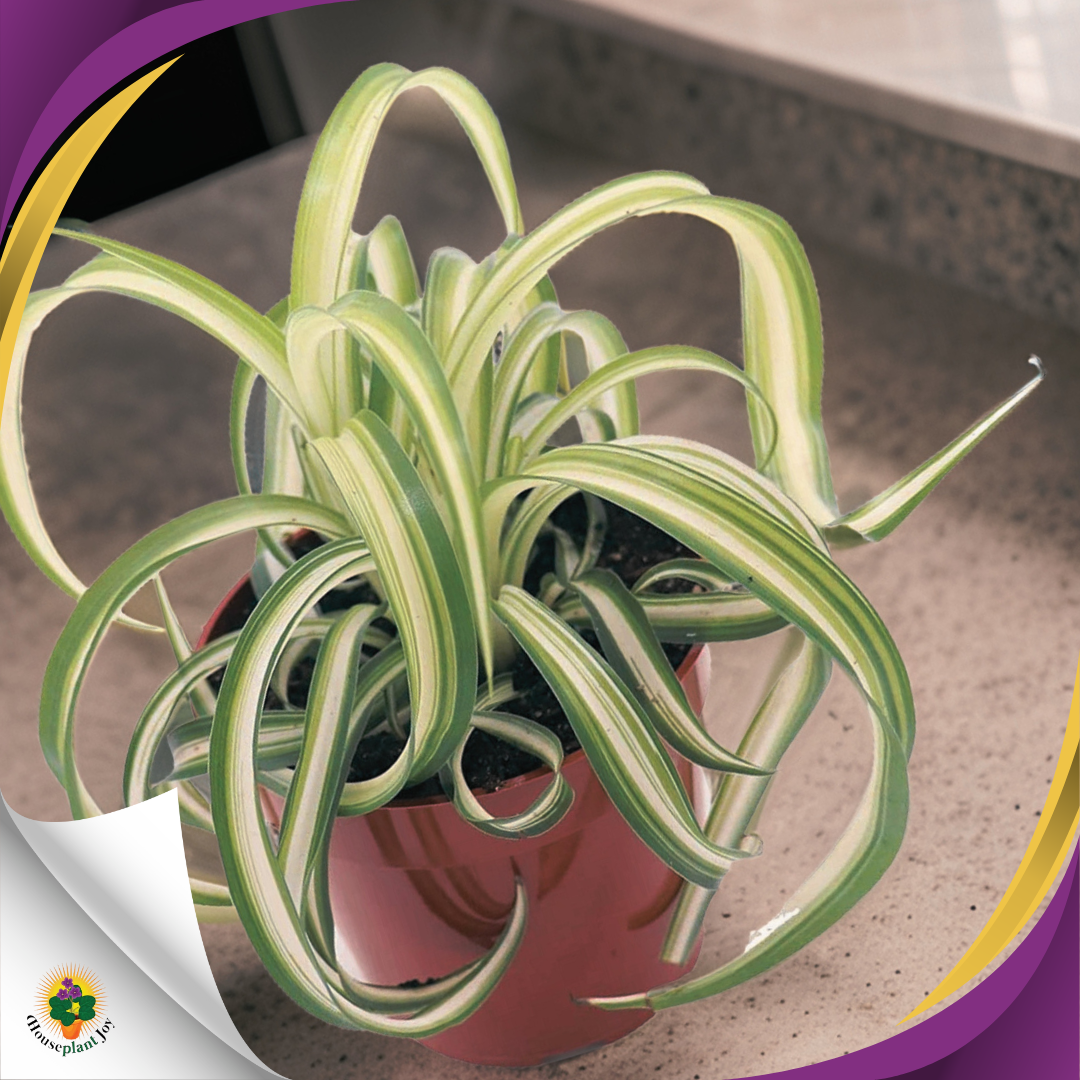HousePlantJoy is supported by our audience. When you purchase through one of our links, we may earn a small affiliate commission. As an Amazon Associate I earn from qualifying purchases. Your cost is not affected.
==================
Types of Spider Plants, such as Chlorophytum comosum, showcase lush foliage and air-purifying properties. These versatile plants encompass various types, each presenting distinctive features—from the classic variegated spider plant to rare and exotic varieties.
This comprehensive guide explores the origins of different spider plant types and provides essential care tips. Whether you’re a beginner or an experienced gardener, you’ll gain the knowledge to appreciate and nurture these beautiful indoor plants.
Types of Spider Plants: Origin, Notable Varieties, and Care Tips
Before we dive into the different types of spider plants, let’s first understand the basics of these indoor plants. Spider plants, scientifically known as Chlorophytum comosum, belong to the Asparagaceae family and are native to tropical Africa. They are commonly grown as indoor plants due to their adaptability to different light and water conditions. Spider plants have long, arching leaves that can reach lengths of up to 12 inches. The leaves may vary in color, ranging from solid green to variegated green and white. These plants are highly sought after for their ability to improve indoor air quality, making them a popular choice for indoor greenery.
Origin and Characteristics of Spider Plants
Spider plants, commonly referred to as ribbon plants, have an interesting origin rooted in southern Africa. They are believed to have originated from tropical Africa, specifically the southern regions of the continent. In the wild, spider plants can be found as ground cover plants, creating lush carpets of green foliage. Their botanical name, Chlorophytum comosum, stems from the Greek words “chloros” meaning green and “phyton” meaning plant, referring to the plant’s green leaves.
One of the distinctive characteristics of spider plants is their long, arching leaves that resemble spiders hanging from a web, hence the name “spider plant”. These leaves can vary in color, from solid green to variegated green and white. The variegated varieties, with their white edges, add visual interest and brightness to indoor spaces. The solid green spider plant, on the other hand, features lush, solid green leaves, creating a calming atmosphere in any room.
Spider plants are known for their resilience and ability to adapt to different light and water conditions. They can thrive in bright, indirect light, but should not be exposed to direct sunlight, as it can scorch their leaves. Spider plants are also relatively forgiving when it comes to watering, tolerating both periods of drought and occasional overwatering. These characteristics make spider plants a low-maintenance choice for indoor plant enthusiasts.
Why Spider Plants are Popular as Houseplants
Spider plants have gained immense popularity as houseplants, and for good reason. In addition to their aesthetic appeal, spider plants offer several benefits that make them highly desirable as indoor greenery. One of the main reasons spider plants are favored as houseplants is their ability to improve indoor air quality. These plants have been found to efficiently remove harmful toxins from the air, including formaldehyde, xylene, and carbon monoxide. This makes spider plants a natural air purifier, creating a healthier environment for you and your family.
Another reason spider plants are popular is their lush foliage. Whether you choose the variegated variety with white edges or the solid green variety, spider plants add vibrant greenery to any indoor space. The long, arching leaves of spider plants create a sense of movement and elegance, enhancing the overall aesthetic appeal of your home or office.
Spider plants are also highly adaptable to different light conditions, making them suitable for various indoor environments. While they prefer bright, indirect light, spider plants can tolerate lower light levels, making them an ideal choice for rooms with limited natural light. Their ability to thrive in indirect light makes spider plants versatile and easy to incorporate into different areas of your home.
Lastly, spider plants are relatively common and widely available, making them accessible to plant enthusiasts of all levels. The common spider plant, with its variegated foliage, is often the go-to choice for beginners due to its adaptability and easy care requirements. With proper care, spider plants can flourish and bring beauty to your indoor space for years to come.
Identifying Different Types of Spider Plants
Now that we understand the basics and popularity of spider plants, let’s delve into the different types of spider plants available. Spider plants come in various varieties, each with its own unique characteristics and visual appeal. The most common types of spider plants include the variegated spider plant, curly spider plant, and solid green spider plant. Let’s explore each of these varieties in more detail.
Variegated Spider Plants and Their Unique Features
Variegated spider plants, with their striking variegated foliage, are a popular choice among indoor plant enthusiasts. These spider plants feature leaves that display a combination of green and white, creating a visually appealing contrast. Here are some unique features of variegated spider plants:
- Variegated spider plants are characterized by their white edges on the leaves, giving them their signature look.
- The white edges of the leaves create a brightening effect, adding lightness and elegance to indoor spaces.
- Variegated spider plants, also known as reverse variegatum, are sought after for their ability to brighten up any room.
- Variegated spider plants require similar care to other spider plant varieties, thriving in bright, indirect light and moderate watering. With the right conditions, these plants can grow lush foliage and produce spiderettes, the small plantlets that dangle from long stems. If you’re looking to add a touch of visual interest and brightness to your indoor space, the variegated spider plant is an excellent choice.
Non-Variegated Spider Plants and What Sets Them Apart
While variegated spider plants steal the spotlight with their striking white edges, non-variegated spider plants have their own appeal. These spider plants are characterized by their solid green leaves, creating a calming and earthy atmosphere. Here’s what sets non-variegated spider plants apart:
- Non-variegated spider plants, like the solid green spider plant, have leaves that are solely green, without any white edges.
- The solid green spider plant, also known as reverse variegatum, is a rare variety of spider plant.
- These spider plants may not have the contrasting white edges of variegated spider plants, but they still offer lush foliage and air-purifying benefits.
- Like other spider plant varieties, non-variegated spider plants are highly adaptable and can tolerate different light and water conditions.
- The solid green spider plant, with its solid green leaves, brings a sense of calm and tranquility to indoor spaces. It is an excellent choice for those who prefer a more minimalist and natural look in their plant collection. With the right care, the solid green spider plant can thrive and enhance the overall aesthetics of your indoor environment.
The Curly Variants of Spider Plants
If you’re looking to add a unique touch to your indoor space, curly spider plants are the way to go. These spider plants feature leaves that curl and twist, creating a whimsical and distinctive appearance. Here are some key features of curly spider plants:
- Curly spider plants, also known as ribbon plants, have leaves that exhibit curly and twisted growth patterns, adding texture and visual interest.
- The curly foliage of spider plants creates a playful and vibrant atmosphere, perfect for plant lovers looking for something different.
- These spider plants thrive in indirect sunlight and prefer high humidity levels, similar to other spider plant varieties.
- In addition to their curly leaves, ribbon plants often produce white blooms, enhancing the overall beauty of the plant.
- Curly spider plants, with their unique appearance, are a delightful addition to any indoor plant collection. Their lush foliage and charming curls brighten up the room and create a captivating focal point. Whether you place them on a shelf, hanging basket, or as part of a plant arrangement, curly spider plants are sure to bring joy and fascination to your indoor space.
A Closer Look at Rare Spider Plant Varieties
In addition to the common types of spider plants, there are also rare and uncommon varieties that plant enthusiasts may find intriguing. These rare spider plant varieties offer unique characteristics and can be a valuable addition to any plant collection. Let’s take a closer look at a few of these rare spider plant varieties and their distinguishing features.
The Unique Ocean Spider Plant
The ocean spider plant, also known as the Chlorophytum amaniense, is a rare variety of spider plant that adds a tropical touch to indoor spaces. Here are some of its unique features:
- Native to tropical Africa, the ocean spider plant thrives in high humidity levels, similar to its tropical origins.
- The leaves of the ocean spider plant are characterized by their lush foliage, creating a tropical atmosphere in any room.
- These spider plants require indirect sunlight and regular watering to maintain optimal soil moisture levels.
- The ocean spider plant is a rare and exotic variety that plant enthusiasts often seek out to add a touch of the tropics to their indoor environments.
The Golden Light Spider Plant and Its Characteristics
Another rare spider plant variety that captures attention is the golden light spider plant. This variety stands out with its yellow banding and lush foliage. Here are some of the characteristics of the golden light spider plant:
- The golden light spider plant, with its bright yellow banding, adds visual interest and vibrancy to indoor spaces.
- This spider plant variety thrives in high humidity levels, just like its tropical counterparts.
- To maintain the plant’s vibrant appearance, the golden light spider plant requires indirect sunlight and enough light to support its growth.
- With the right care, the golden light spider plant can be a stunning addition to any indoor plant collection, offering cheerful yellow accents amidst the green foliage.
The Solid Green Spider Plant: A Classic Choice
While rare spider plant varieties offer a sense of uniqueness, the solid green spider plant remains a choice that never goes out of style. This variety, also known as chlorophytum comosum vittatum, is cherished for its lush foliage and air-purifying properties. Here are some characteristics of the solid green spider plant:
- The solid green spider plant features solid green leaves, creating a and natural ambiance in indoor spaces.
- Its common name, chlorophytum comosum vittatum, refers to the solid green leaves that are a signature feature of this variety.
- Solid green spider plants thrive in indirect sunlight and high humidity levels, making them suitable for tropical or humid environments.
- classic spider plant variety is known for its ability to improve indoor air quality, making it a favorite choice for plant enthusiasts.
Exploring More Uncommon Spider Plant Varieties
In addition to rare spider varieties, there are also uncommon types of spider plants that plant enthusiasts may find fascinating. These spider plant varieties exhibit different characteristics and offer a unique addition to indoor greenery. Let’s explore a few of these uncommon spider plant varieties and their distinguishing features.
The Bracket Plant: A Spider Plant with a Twist
A unique spider plant variant, the Bracket Plant, also referred to as the reverse variegatum, is recognized for its white edges on solid green leaves. Originating from southern Africa, it requires adequate light but should be shielded from direct sunlight and has specific humidity requirements. This rare indoor plant adds a distinctive touch with its notable yellow band on the leaves, creating an eye-catching appeal.
The Bichetii Plant: A Less Known Spider Plant Variant
The bichetii plant, also known as Chlorophytum comosum variegatum bichetii, is a less known spider plant variant that can bring a touch of uniqueness to indoor spaces. Here are some characteristics of the bichii plant:
- Native to tropical Africa, the bichetii plant boasts bright orange stems and green leaves, creating a striking visual contrast.
- These spider plants thrive in high humidity levels and indirect sunlight, similar to other tropical spider plant varieties.
- The bichetii plant requires regular watering, maintaining appropriate moisture levels for optimal growth.
- This rare spider plant variety, with its ground cover-like appearance, contributes to the overall greenery and botanical appeal of indoor environments.
The Fire-Flash Spider Plant: A Fiery Addition to Your Collection
For those looking to add a fiery touch to their plant collection, the fire-flash spider plant is a captivating choice. This rare spider plant variety stands out with its bright orange stems. Here are some characteristics of the fire-flash spider plant:
- The fire-flash spider plant, known as Chlorophytum comosum Fire Flash, boasts bright orange stems that catch the eye.
- Similar to other spider plant varieties, the fire-flash spider plant thrives in indirect light and well-draining soil.
- The care requirements for the fire-flash spider plant include maintaining appropriate humidity levels and consistent care- With its unique orange stems, the fire-flash spider plant adds a fiery touch to indoor spaces, creating a vibrant and visually appealing presence.
Some Notable Indoor Spider Plant Varieties
The Bonnie Spider Plant, also known as chlorophytum comosum ‘Bonnie,’ is a popular choice for indoor spaces. Its common name originates from the University of Florida’s Environmental Horticulture Department. Another favorite, the Hawaiian spider plant or chlorophytum comosum ‘hawaiian,’ hails from South Africa. It requires tap water and indirect sunlight. Both varieties have a maximum height of 12 inches and can tolerate temperatures between 60 and 75 degrees Fahrenheit. This information provides a complete guide to selecting and caring for these different spider plant varieties.
The Bonnie Spider Plant: A Favorite for Indoors
Ideal for indoor settings, the bonnie spider plant requires indirect sunlight, making it a favorite choice for indoor ground cover. With its solid green leaves and air-purifying qualities, this common spider plant variety offers a tropical feel to indoor spaces, similar to other spider plant varieties. Low-maintenance and easy to care for, it provides lush foliage, suitable for indoor environments. Additionally, it thrives in South Africa, known for different varieties of spider plants.
The Hawaiian Spider Plant: A Tropical Touch
Originating from tropical Africa, the hawaiian spider plant brings a tropical touch to indoor spaces. Here are some characteristics of the hawaiian spider plant:
- The hawaiian spider plant, scientifically known as Chlorophytum comosum Hawaiian, features green and white blooms.
- Similar to other spider plant varieties, the hawaiian spider plant thrives in indirect sunlight and high humidity levels.
- Adding the hawaiian spider plant to your indoor greenery brings a touch of the tropics, creating a vibrant and lush atmosphere.
- This rare spider plant variety is native to tropical Africa and can thrive in optimal humidity and indirect light conditions, reminiscent of its natural habitat.
The Zebra Spider Plant: Stripes in Nature
- The zebra spider plant, scientifically known asophytum comosum zebra, adds visual interest to indoor spaces with its striped foliage.
- Similar to other spider plant varieties, the zebra spider plant prefers indirect sunlight and regular watering.
- The zebra spider plant, with its striking zebra-like stripes, creates a focal point in any room enhancing the overall aesthetics of the space.
- Thriving in high humidity levels, the zebra spider plant brings a touch of the wild into indoor environments, making it a popular choice among plant enthusiasts.
Learning About the Care and Maintenance of Spider Plants
Understanding the care and maintenance requirements of spider plants is essential for their well-being and longevity. With the right care, spider plants can thrive and bring beauty to your indoor space. Let’s explore the best practices for growing and nurturing spider plants, as well as common and their solutions.
How to Grow and Nurture Spider Plants
Growing and nurturing spider plants is relatively easy, making them an ideal choice for plant enthusiasts of all. Here are some care tips to help your spider plants thrive:
- Spider plants prefer bright, indirect sunlight. Place them in a location where they can receive bright light but not direct sunlight, as direct sunlight can scorch their leaves.
- Maintain the temperature between 60-75 degrees Fahrenheit (15-24 Celsius) for optimal growth.
- Provide enough light to support the spider plant’s growth, but avoid exposing them to prolonged periods of direct sunlight, as it can damage the leaves.
- Water spider plants moderately, allowing the soil to dry out between waterings. Overwatering can lead to root rot, underwatering can cause the leaves to brown at the tips.
- Spider plants are generally adaptable to different humidity levels, but they appreciate higher levels of humidity. Consider using a humidifier or placing the plant on a tray of water to increase humidity.
- In addition to these care tips, spider plants can be easily propagated by the plantlets, the small spider-like leaves that grow from the parent plant, and planting them in well-draining soil. With regular care, spider plants will reward you with lush foliage, air-purifying benefits, and the joy of watching spiderettes grow.
Common Problems and Solutions for Spider Plant Care
Brown tips on spider plant leaves might signal the need for increased humidity or reduced direct sunlight exposure. Overwatering can result in root rot, while underwatering can cause leaf browning. Spider plants are vulnerable to fluoride and should be watered with distilled water. They may attract spider mites and aphids, treatable with neem oil or insecticidal soap. Infrequent fertilization prevents salt accumulation, averting potential damage. Consider these factors for optimal spider plant care.
Summarizing the Diversity of Spider Plants
In summary, spider plants offer a diverse range of varieties, each with its own unique characteristics and appeal. From the popular variegated spider plant to rare and exotic varieties, the world of spider plants is a fascinating one. These indoor plants hail from different parts of the world, including southern Africa and tropical regions. With their lush foliage, air-purifying benefits, and versatility, spider plants have become indoor greenery options worldwide.
Overview of the Various Spider Plant Types
The world of spider plants is filled with different types and varieties, each offering its own unique charm and appeal. Let’s take moment to summarize the various types of spider plants we have explored:
- Variegated spider plants, with their white edges, brighten up indoor spaces and add visual interest.
- Non-variegated spider plants, such as the solid green spider plant, offer lush foliage and air-purifying benefits.
- Cur spider plants, with their curly foliage, create a unique and playful atmosphere in any room.
- Rare spider plant varieties, including the ocean spider plant, golden light spider plant, and solid green spider plant, add a touch of uniqueness and vibrancy to indoor spaces.
- Other uncommon spider plant varieties, such as the plant, bichetii plant, and fire-flash spider plant, offer distinctive features and become standout pieces in any plant collection.
- Notable indoor spider plant varieties, like the bonnie spider plant, hawaiian spider plant, and zebra spider plant, complement indoor aesthetics and thrive in different indoor environmentsWith the variety of spider plant types available, there is something for every plant enthusiast, whether you prefer simple and elegant plants or those that make a bold statement.
Are All Spider Plants the Same?
No, not all spider plants are the same. Spider plants exhibit diverse growth habits, leaf colors, and variegation patterns, contributing to their uniqueness. Different spider plant varieties offer varying care requirements, such as light exposure and water needs. Some spider plant varieties, like the chlorophytum amaniense have rare characteristics that set them apart from common spider plants. Understanding the distinct features of different spider plant types allows for tailored care and maintenance.
How Different Spider Plant Varieties can Enhance Your Space
Different spider plant varieties on the market offer opportunities for creating diverse indoor plant displays. Here’s how different spider plant varieties can enhance your space:
- Variegated spider plants, with their striking foliage, add visual interest and brightness to indoor settings.
- Zebra grass spider plants, with their unique banding, create focal point in any room.
- The southern African origin of spider plants brings a touch of tropical greenery to indoor spaces.
- Rare spider plant varieties, like the chlorophytum capense, appeal to plant enthusiasts seeking distinctive additions to their collections.
- Indoor spaces can benefit from the vibrant foliage and air-pifying qualities of different spider plant varieties.
Video Credits: @HerbStories
Understanding Varieties of Spider Plant
In conclusion, spider plants are not just a single variety. There is a wide array of spider plant types, each with its own unique characteristics and features. From variegated spider plants to curly variants, rare and uncommon varieties, and notable indoor favorites, there is a spider plant for every plant lover’s preference. Understanding the different types of spider plants allows you to enhance your space with their beauty and versatility. Whether you’re a beginner or an experienced plant parent, spider plants are relatively easy to care for and propagate. By providing proper care and maintenance, you can enjoy the lush green foliage and air-purifying benefits of these delightful plants. So go ahead and explore the diverse world of spider plants to find the perfect addition to your indoor garden.
Frequently Asked Questions
What Are the Different Types of Spider Plants and How Do They Differ?
Spider plants come in various types, each with its own unique characteristics. The traditional variegated variety features green and white leaves, while other types include solid green, curly-leaved, and reverse-variegated spider plants. These variations differ in leaf shape, color, and pattern, but all are easy to care for and make excellent houseplants.
How Do I Care for My Specific Type of Spider Plant?
Different types of spider plants have slightly different care requirements, but most prefer well-draining soil and bright, indirect light. Variegated varieties may need more light than solid green ones. Some spider plants produce plantlets that can be propagated. Research the care needs of your specific type for optimal growth.
Which Type of Spider Plant Is Best for Beginners?
If you’re a beginner looking to start your spider plant collection, the Chlorophytum comosum variety is a great choice. It’s the most common and easiest to care for. Another popular option is the variegated spider plant with its white-striped leaves. These plants thrive in bright, indirect light and well-draining soil, making them perfect for beginners.
Are Spider Plants Easy to Propagate, and Do Different Varieties Have Varying Propagation Methods?
Spider plants are known for their ease of propagation. Most varieties can be propagated by dividing the plantlets or using offshoots produced by mature plants. While the general method is similar for most types, some variations may have specific requirements or respond differently to certain propagation techniques.
Are There Any Common Issues or Pests That Affect Spider Plants, and Do Different Varieties Have Varying Susceptibility?
Spider plants are relatively hardy, but they can be susceptible to issues like overwatering, under-watering, or spider mites. While these problems generally apply to all spider plant varieties, some types may exhibit specific resilience or vulnerabilities to certain pests or diseases, requiring tailored care approaches.
Never Miss a Moment – Follow Us on Social Media!
Join our vibrant community of enthusiasts by following us on our social media platforms! Dive into a world of exclusive content, behind-the-scenes glimpses, and interactive experiences. Be the first to know about our latest updates, promotions, and events.
Let’s build a digital bond together – follow us now for an enriching and engaging experience
Related Readings


